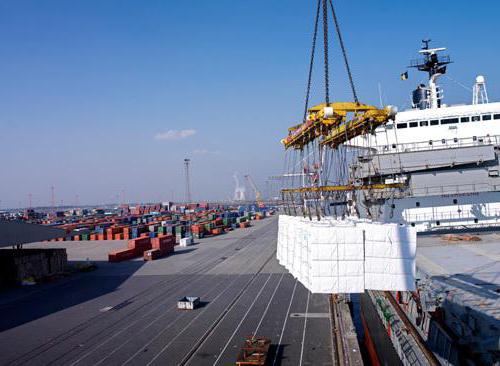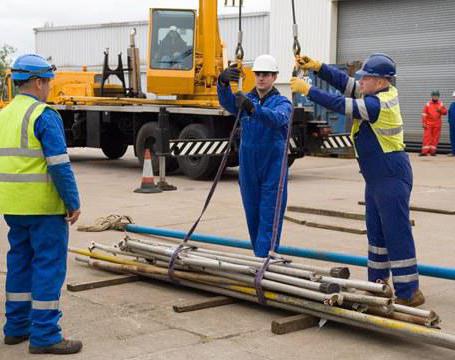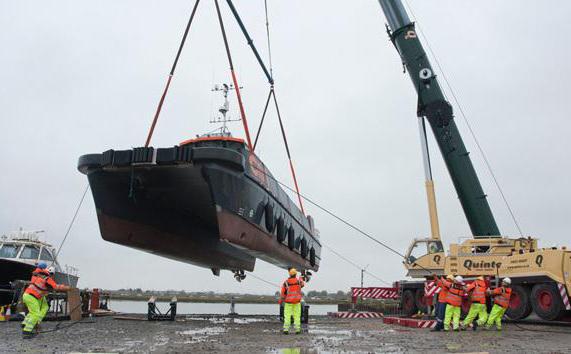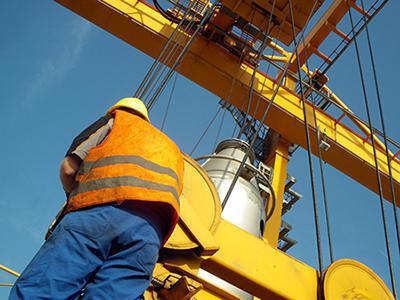The implementation of loading and unloading measures is accompanied by many risks - both for tangible property and for the health of people involved in such processes. Therefore, it is very important to correctly approach the technical organization of this process, taking into account the rules and recommendations of safety standards. It should be borne in mind that the organization of loading and unloading operations includes several stages, at each of which an appropriate level of performance must be ensured. This also applies to the training of loaders with drivers, and the assessment of the condition of technical equipment, as well as the laying of optimal driving routes, ways of securing cargo, etc.

Requirement for the place of work
First of all, stability of the foundation should be ensured in the place where the production of work events is planned. The floor covering or supporting structures must withstand both the mass of the load and the placement of the handling equipment. For the placement of cargo, special platforms should be provided - in particular, the boundaries of stacks, driveways and approaches are indicated. Also, the flooring material must meet the characteristics of the cargo - for example, be resistant to cuts, punctures, contacts with chemically active media, water and high-temperature substances. It provides for the organization of loading and unloading and the implementation of sanitary standards. Again, when working with environmentally harmful goods, jobs should have a differentiation line. Such areas are separated from residential areas and public places.

Rules for the use of mechanized equipment
In the process of loading and unloading operations, a wide range of mechanized means can be used - from stationary lifts to truck cranes. Before admitting the equipment to work, its condition and especially the reliability of load gripping devices should be checked. Crane-type machines are not allowed to work if bad weather conditions are observed within the operational zone. In particular, fog, snow, rain and strong wind interfere with such work. More precise parameters of climatic conditions are indicated in the passports of specific models. Also, the organization of loading and unloading operations involving mechanized units provides for the assessment of the characteristics of the cargo itself. The fact is that loads of unknown mass for transportation on transport vehicles and cranes are not allowed.
For all, without exception, hoisting machines, the rule applies, according to which the risk of their spontaneous movement should be excluded - all maneuvers should be strictly controlled by the operator. Also, the rules of loading and unloading indicate that it is possible to begin manipulating the load only if it is completely released from the primary fixation. Maintenance personnel should check the condition of the load and for the absence of accidental pinching.

Manual Work Rules
If you plan to carry out loading and unloading without the use of special equipment, then the following rules will need to be considered:
- Operations with cutting, sharp and piercing objects are carried out only on condition that the products are placed in covers and special cases.
- Glass and other fragile items can only be moved in special containers - if possible in cellular containers.Putting containers for temporary storage is allowed only if the foundation is reliable.
- If it is decided to use the services of loaders, then for them the maximum load will be equal to 50 kg. Moreover, the distance in this case is not more than 25 m.
- To manually move toxic loads are not allowed.
Staff requirements

Only people over 18 years old are allowed to work. At the same time, everyone should undergo a medical examination, which did not reveal contraindications for participation in such work. Movers who work in transporting cattle must be vaccinated accordingly. Engineering and managerial workers responsible for the safety of loading and unloading operations must have the skills to service technological processes, know the safety standards and use of handling equipment. Professional services of movers, who will have to participate in working with hazardous and highly hazardous materials, even if they have the appropriate qualifications, can only be used after briefing before loading and unloading operations. The head of the event should indicate the specific characteristics of the cargo and indicate the nuances of physical handling.
Rules for handling accessories
In addition to directly manual effort and mechanized equipment, auxiliary devices are widely used in lifting operations. These include both simple boards and special slings and platforms. In each case, its own rules for the use of such funds are assumed. For example, to fix the load often use metal or wooden stops, shields and ramps. In working with them, reliability of fastening is very important - it is better to abandon the ropes in favor of wire or steel ropes. To work with the equipment, bridges, overpasses, platforms and other devices that allow loading at heights are often used. In such cases, the organization of loading and unloading should include preliminary cleaning of the surfaces of the platforms, checking their technical condition, and, if necessary, treating the surfaces with antislip compositions.

Handling Instructions
Before lifting, the load must be firmly secured by the slinger. At this point, a signal system between the sending and receiving loaders should be developed. All manipulations, including lifting, moving, lowering and placing should be performed smoothly and without jerking. Also, the loading and unloading instruction indicates that each new maneuver should be completed only after the complete cessation of the previous action. For example, you can detach a load only after stopping the movement in the air. At the same time, regardless of the load, a height of at least 50 cm must be maintained during the movement.
Loading and unloading operations with containers

The use of containers is not always a mandatory requirement, but in cases of its use the following rules should be followed:
- The tare mass must not exceed gross weight.
- Loading and moving methods should not imply the possibility of container deformation.
- If containers with sides are used, the load must not exceed their height.
- All components, walls and locking mechanisms in the packaging design that may open must be locked during operation.
- If carrying out loading and unloading operations involves tipping over the tank, this operation should only be performed with special equipment or devices intended for such actions.
- The rules prohibit tipping and dragging to move the container.
Safety requirements
Loaders and auxiliary workers should have special equipment, including helmets, gloves and gloves, as well as glasses if necessary. Depending on the type of cargo, a set of protective clothing may include shoes with protective inserts and a respirator. There should not be any third-party people or animals at the work site. Again, safety standards during loading and unloading require that the entire site where lifting operations will be carried out must be fenced.

Conclusion
Serving small and bulky goods is a responsible and dangerous job. The quality of its implementation is influenced by many aspects from the skills of performers to the physical condition of the smallest element of the rafter system. Therefore, loading and unloading and placement of goods should only be carried out after careful preparation. The head of the event should initially draw up a plan that will describe the technological processes, lists with equipment and machinery, as well as the functions of workers and insurance. It is important to work out the links between the individual sections and the components of the load chain. This will allow us to work out in more detail the individual nuances of the workflow, which will certainly affect the quality of the result.
